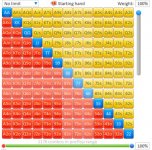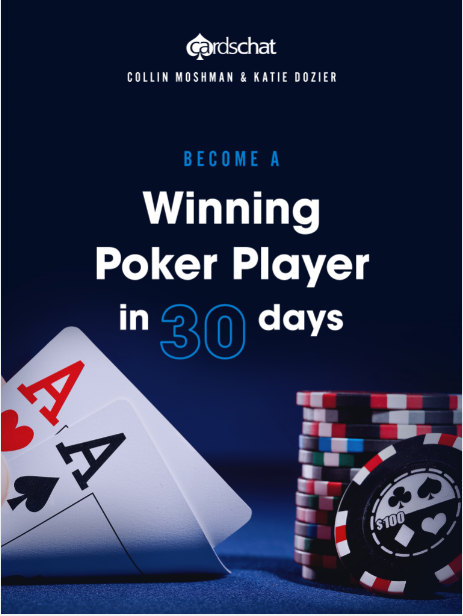Today we will discuss
Thinking in Ranges.
If you have not yet read Day 3 and watched the video for Day 3 - take a few minutes now to do that and then come back here to discuss it.
Thinking in Ranges
This is one of my favorite chapters in the ebook - and the video is awesome too. Understanding that you don't need to know exactly what your opponent has - but just need a range of hands - takes your game to a new level.
Let's talk about this and don't forget - Katie and Collin are available to answer your questions about thinking in ranges.
Quoting the book, page 13, Chapter: Thinking In ranges:
“The goal of a strong player is to put his opponent on a range of hands instead of just a single holding.”
This is very important to all of poker players, not to try to emulate Daniel Negreanu when he says his opponent has AA or KK and he’s right about it. It’s a very abstract thinking and takes time to improve it, to think that our adversary can be holding AA, but also KK, QJs, JTs and 99, just for example.
“The reason why putting opponents on a range of hands is so important is because their actions will almost always be consistent with multiple holdings. So instead of getting caught up in
just one hand your opponent might have, the best way to think is in terms of your opponent’s potential range of different holdings.”
e.g, A very tight player (NIT) open from UTG and we are sitting in the BTN and we do 3-bet it. Everyone folds and UTG player makes a 4-bet: when he opened from UTG first he could have many hands such as KJs+ ATs+ and 77+, but after we/BTN/Hero 3-bets and villain comes with a 4-bet (assuming all players have deep stacks), we assume that villain isn’t doing it with hands like 99 or KQs, because his table image and HUD data/statistics show us that this player 4-bets nearly 3% of his range of hands, so we put it in his 4-bet range KK+ and AQs+ only as value hands.
More experienced tight players will 4-bet with strong values and also with a couple of strong semi-bluffs such as ATs and AJs and A2s-A5s, but this is not the case of the NIT of our sample examples: this NIT is 4-betting massively for value and we are going to fold the vast majority of our range in this case, and call it or 5-bet it/Push only with KK+ and AKs, for instance.
To think about ranges instead of hands is the first step we must make in order to climb the ladder of GTO and balanced ranges. Also, the notions of combos are paramount to fully comprehend how ranges can vary depending on our opponents abilities.
Thanks for providing such good insights with this poker course, I hope I haven’t made any blunder with my interpretations and analyses.















